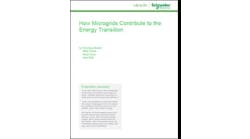Before Sonnen became involved in a new and innovative Arizona project — a clean energy hive of 2,900 homes designed to act as a virtual power plant — the German company was frustrated with the US.
In fact, Blake Richetta, Sonnen senior vice president, says that his CEO used a mild expletive to describe what it’s like trying to convince American utilities to partner in behind-the-meter storage projects. In Germany, on the other hand, Sonnen, a leader in the field, found it was easy to get projects off the ground.
“When I came to Sonnen from Tesla, there was all this talk and no unified approach to a clean energy vision in the US. It frustrates the German team.” American utilities mostly wanted to implement pilot projects and would become paralyzed by them, said Richetta, former North America Powerwall sales manager for Tesla.
To create some critical mass in behind-the-meter residential solar plus storage in the US, Sonnen decided to partner with Mandalay Homes, a leading green builder.
The just-announced project that resulted is anything but a small, conservative pilot.
Located in Prescott, Arizona, the Jasper master planned community will include solar-plus-storage and will feed clean power to a virtual power plant operated by Sonnen, said Richetta. The VPP, which uses Sonnen software to knit together power from numerous renewable energy and storage resources, has the ability to work independently of the grid. All the homes will include software that allows their storage systems to communicate with each other and create a “hive” of clean energy storage systems that work together.
The project provides for a total of 23 MWh of Sonnen energy storage system capacity and 11.6 MW of power input (and output) potential.
In addition. Sonnen has built into each home the ability to upgrade each energy storage system in the cutting-edge community to provide of up to 16 kWh of energy and 8 kW of power, he said.
With the VPP, Sonnen has the ability to boost the efficiency of the grid and provide cleaner power — with or without partnering with utilities. However, the company would prefer to work with the local utility, Arizona Public Service, and is now in discussions with the company. In the meantime, Sonnen is powering forward with its project.
“We’re trying to redefine the grid shared by all of us and create a clean energy future, instead of having a clean energy industry that doesn’t harmonize. That’s a dead end,” he said. “We could have our own little island, but that doesn’t do anything for the greater society.”
“We could have our own little island, but that doesn’t do anything for the greater society.”
Without the utility, Sonnen can contribute to cleaning up the grid and making it more efficient by doing some load shifting and taking advantage of attractive time-of-use rates from APS, he said.
Between 3 and 5 am, extra energy from a nuclear power plant is wasted in the region, said Richetta. Sonnen plans to charge part of the batteries with that energy.
“Later, in the morning, we will discharge during a smaller peak — the morning peak.” In doing so, the company avoids using power created by a dirty coal peaking plant.
A second load shift will happen between 8 am and 1 pm, when there’s lots of solar energy available, but people are generally not home to use it. Sonnen will charge batteries at that time, too, then discharge them when power is needed during peak hours.
Sonnen plans to use a new time-of-use rate plan under which off-peak power is about 4 cents/kWh and on-peak power is about 30 cents/kWh.
“That’s what‘s so awesome about our plan,” Richetta said.“There’s a huge price swing from off peak to peak.” Sonnen can implement those load shifting projects on its own, without partnering with APS.
Ideally, the utility will partner with Sonnen and take advantage of the VPP’s ability to support the grid with additional load shifting and other services.
One worry that often casts a shadow on residential energy storage projects is the potential for fire in the batteries. In this case, there’s no need to worry about fires from batteries, said Richetta. That’s because the batteries were built specifically for homes and utility storage — not for cars.
“For a car, the battery needs to be dense and light.” However, most lithium ion batteries built for cars are fire hazards in homes. “If you stab one, there’s thermal runaway. It’s like a flame thrower,” he explained.
[clickToTweet tweet=”#Sonnen Welcomes America to the Future with a Hometown Virtual Power Plant” quote=”Sonnen Welcomes America to the Future with a Hometown Virtual Power Plant”]
Sonnen’s batteries, on the other hand, are less energy dense, safer and not flammable, according to Richetta.
Sonnen’s interest in charging those batteries using grid power means the company doesn’t want to defect from the grid, he noted.
“We are buying power from the grid in order to help the grid. This is a story of grid integration,” said Richetta. “We want to help the grid.”
Track news about Sonnen. Subscribe to the free Microgrid Knowledge newsletter.







